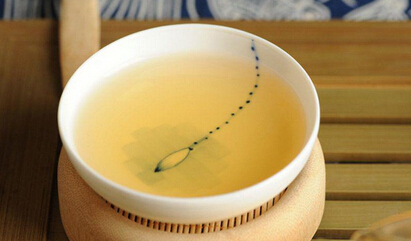Pu-erh tea often has several tastes such as sweet, bitter, astringent, sour, watery, and tasteless. These flavors may exist alone in a certain brew of Pu-erh tea, or several tastes may coexist simultaneously. Today, let's talk about these tastes of Pu-erh tea:

1. Sweet: Sweetness is what Pu-erh tea drinkers dream of. After long-term aging, the bitter and astringent tastes of Pu-erh tea slowly weaken due to oxidation, or even disappear completely, while the sugar content remains in the tea leaves. Upon brewing, the sweet taste is slowly released.
High-quality Pu-erh tea becomes noticeably sweeter the more it is brewed. The mild sweetness in the tea is elegant and harmless to health, different from the cloying sweetness of thick sugar. For example, Pu-erh tea products made from raw tea leaves have a pure and elegant sweetness in their soup, which best represents the true nature of Pu-erh tea—calm and leisurely, elevating the appreciation of Pu-erh tea to an artistic realm.
2. Bitter: Bitterness is the original taste of tea. The bitterness of Pu-erh tea is due to its caffeine content, which has a stimulating effect on the human nervous system. Truly healthy appreciation of Pu-erh tea is not about seeking alertness through bitterness, but rather achieving a sweet aftertaste and throat sensation through the slightly bitter tea soup. Pu-erh tea made from relatively tender grade tea leaves will have a bitter taste. The handling of the bitter taste is controlled through brewing methods. It also depends on the drinker's acceptance of bitterness to brew a tea soup with an appropriate level of bitterness.
3. Astringent: It is often said that no bitterness or astringency means it's not tea. In fact, well-aged old Pu-erh tea no longer has astringency. The astringent sensation in tea is due to the tannin content. Pu-erh tea is made from large-leaf tea varieties, which contain more tannins than ordinary teas, so new raw Pu-erh tea is very strong and particularly astringent. An appropriate level of astringency is acceptable to drinkers because it causes the muscles in the mouth to contract, producing a salivating effect. Astringency can increase the strength and body of the Pu-erh tea soup and also satisfy drinkers who prefer a heavier taste.
4. Sour, Watery: Sourness and wateriness are both undesirable tastes in Pu-erh tea. Of course, one does not wish to encounter sour or watery tastes when enjoying Pu-erh tea. Poor tea processing or storage can lead to a sour taste. For some Pu-erh teas with a sour taste, the sourness may gradually decrease after three to five brews. A watery taste gives a impression of weakness, spoilage, and lack of freshness. Both sour and watery tastes are rejected by Pu-erh tea drinkers.
5. Tasteless: Most Pu-erh tea connoisseurs agree that a tasteless taste is the ultimate flavor of Pu-erh tea. This may be related to the aging period. The evaluation of a 100 to 200-year-old Golden Melon Tribute Tea is that the soup has color, but the tea taste becomes faint due to aging. The tasteless taste embodies a full Zen state. Being able to appreciate such a realm is probably unique to Pu-erh tea among hundreds of tea varieties.